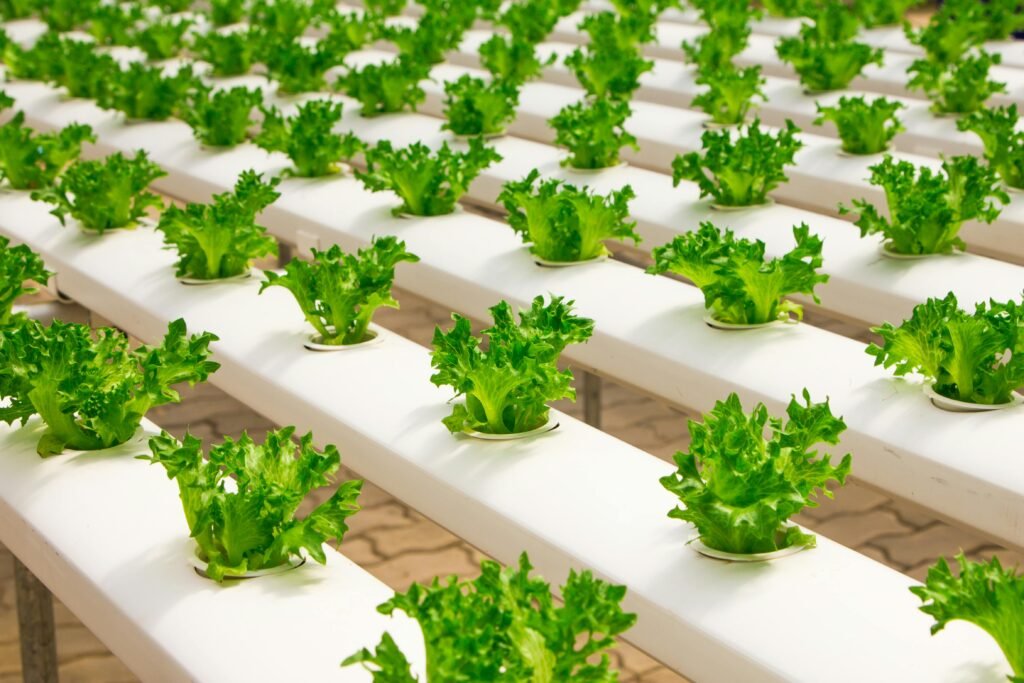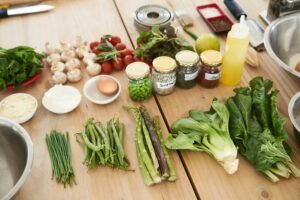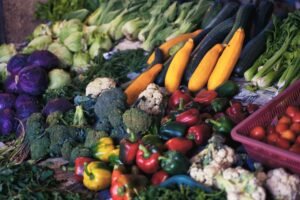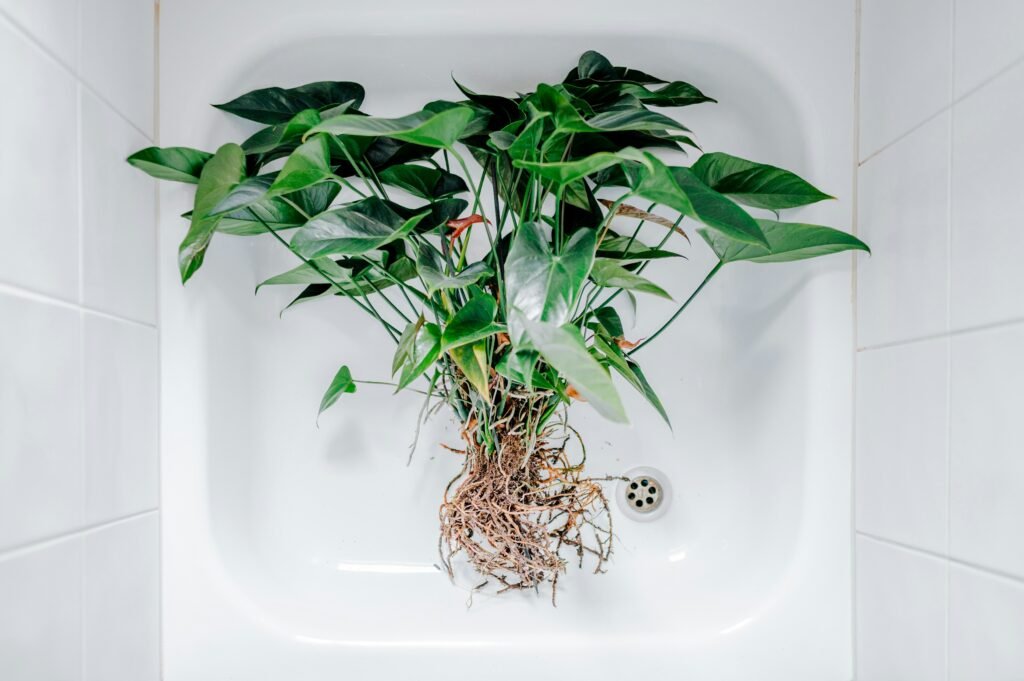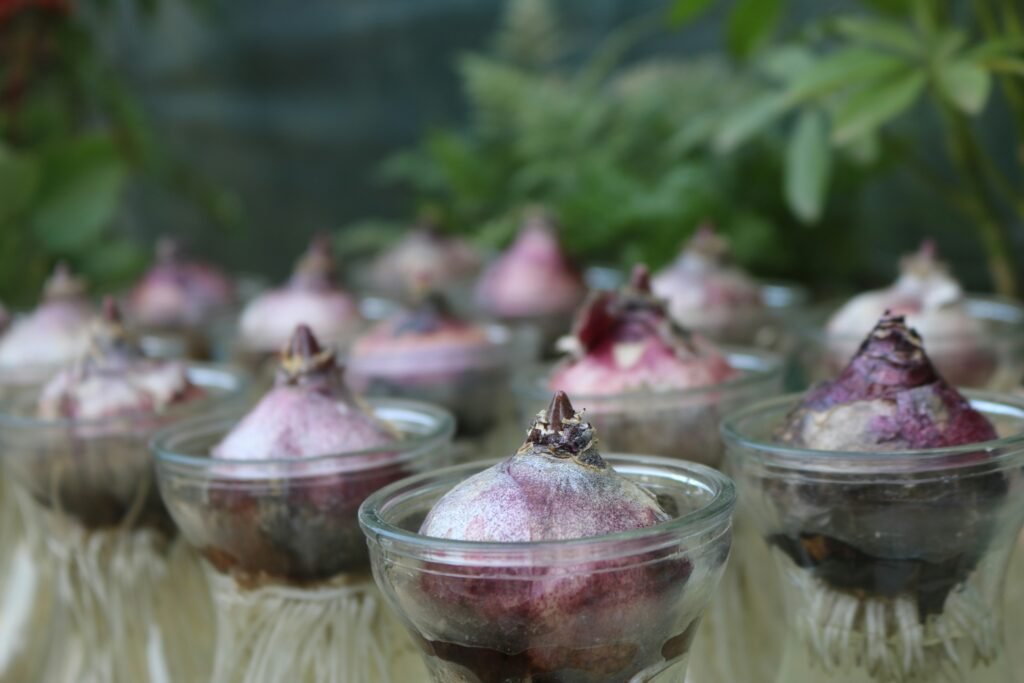Leafy Greens: A Hydroponic Favorite
Leafy greens, such as lettuce, spinach, and kale, have garnered significant attention in the world of hydroponics owing to their exceptional adaptability and rapid growth cycles. These plants are particularly well-suited for hydroponic systems due to their minimal nutrient requirements and ability to thrive in controlled environments. The inherent advantages of growing leafy greens hydroponically make them a favored choice among both novice and experienced growers.
One primary reason leafy greens excel in hydroponic systems is their relatively short growth span. Lettuce, for example, can mature in as little as 30 days, making it a prime candidate for continuous crop rotation. Spinach and kale also exhibit robust growth, often reaching harvestable size within 40 to 60 days. This quick turnaround enables growers to maximize yield and efficiently utilize their hydroponic setup.
Beyond their rapid growth, leafy greens have modest nutrient requirements compared to other plants. Essential nutrients like nitrogen, phosphorus, and potassium are readily absorbed in a hydroponic solution, allowing for optimal growth without the excess demands of soil-based gardening. This efficiency not only conserves resources but also simplifies the nutrient management process, making it easier for growers to maintain ideal growing conditions.
To ensure the optimal growth of leafy greens in hydroponic systems, it is crucial to maintain a balanced nutrient composition. A solution with an Electrical Conductivity (EC) of 1.2 to 1.8 and a pH range between 5.5 and 6.5 is ideal for these plants. Additionally, sufficient light exposure is paramount. Leafy greens generally require 14 to 16 hours of light per day, with full-spectrum LED lamps being a popular choice among indoor growers.
In summary, the compatibility of leafy greens with hydroponic systems stems from their rapid growth rate, low nutrient demands, and adaptability to controlled environments. By adhering to best practices such as maintaining proper nutrient balances and providing adequate light, growers can successfully cultivate thriving crops of lettuce, spinach, and kale, thus reaping the benefits of hydroponic gardening.
Herbs: Flavorful and Efficient
Herbs such as basil, cilantro, and mint are exceptionally well-suited for hydroponic systems, thanks to their compact sizes and relatively fast growth rates. Cultivating these aromatic plants in a hydroponic setup not only maximizes space but also ensures a steady supply of fresh herbs year-round. These plants have specific needs that, when adequately met, can lead to robust growth and enhanced flavors.
One of the essentials for growing herbs hydroponically is maintaining the right pH levels. Basil thrives in a pH range of 5.5 to 6.5, while cilantro and mint prefer a pH between 6.0 and 7.0. Ensuring that these pH levels are consistently maintained will help the herbs absorb nutrients more efficiently, promoting healthier and more flavorful growth.
Light is another critical factor for the optimal growth of hydroponic herbs. These plants generally require at least 14-16 hours of light each day. Utilizing LED grow lights can be particularly beneficial as they provide a full spectrum of light without generating excessive heat. This mimics natural sunlight and supports vigorous growth. Ensuring adjustable light fixtures allows for height variations as the plants grow.
When it comes to choosing the suitable hydroponic systems, both Nutrient Film Technique (NFT) and drip systems are highly recommended. NFT systems are particularly advantageous for herbs due to their ability to deliver a steady stream of nutrients directly to the plant roots. In contrast, drip systems ensure that the nutrient solution is precisely distributed, preventing waste and also catering to the exact needs of each herb.
Growing herbs hydroponically offers several benefits beyond consistent supply. The controlled environment of hydroponic systems can protect plants from soil-borne diseases and pests, enhancing plant health and reducing reliance on pesticides. Moreover, many growers report that hydroponic herbs often have more concentrated flavors compared to their soil-grown counterparts, making them a choice ingredient for culinary enthusiasts.
Fruiting Plants: Tomatoes and Peppers
Tomatoes and peppers are quintessential examples of fruiting plants that flourish in hydroponic systems. These plants are particularly well-suited for hydroponics due to their high yield potential and adaptability to controlled environments. However, cultivating them successfully requires understanding their specific requirements, including their nutrient needs, pollination techniques, and necessary support structures.
Both tomatoes and peppers have high nutrient demands. A balanced nutrient solution rich in nitrogen, phosphorus, and potassium is essential to fuel their growth and fruit production. Micronutrients such as calcium, magnesium, and iron are also crucial to prevent common deficiencies. Monitoring and adjusting the pH level of the nutrient solution to remain within the range of 5.5 to 6.5 ensures optimal nutrient absorption.
Pollination is a critical aspect of growing fruiting plants hydroponically. While tomatoes are typically self-pollinating, the absence of natural wind and insects in indoor setups means manual pollination becomes necessary. Gently shaking the plants or using an electric toothbrush can simulate the natural vibrations and enhance fruit set. In contrast, many varieties of peppers benefit from cross-pollination. Encouraging air circulation through fans or employing small paintbrushes to transfer pollen can increase yields.
Support structures are vital for managing the vertical growth and weight of fruit-laden branches. Trellises, stakes, and plant clips are commonly employed to provide stability and prevent stem breakage. Using these support systems not only improves plant health but also maximizes space efficiency within hydroponic setups.
Pest management and disease prevention are ongoing challenges in hydroponic gardening. Common pests such as aphids, whiteflies, and spider mites can be controlled through integrated pest management (IPM) practices. This includes introducing beneficial insects like ladybugs, using neem oil sprays, or employing sticky traps. Tomato plants are particularly susceptible to diseases like blight and blossom end rot. Ensuring proper air circulation, maintaining cleanliness, and regularly inspecting plants for early signs of infection are effective preventive measures. Utilizing disease-resistant plant varieties can further reduce risks.
By adhering to these guidelines, growers can cultivate robust and productive tomato and pepper plants in hydroponic systems, reaping the benefits of fresh, home-grown produce year-round.
Cucumbers and Zucchini: Abundant Yielders
Cucumbers and zucchinis are among the most prolific produce options for hydroponic systems, offering impressive yields when given the right care and conditions. These vine plants are known for their fast growth rates and abundant fruiting capabilities. Both cucumbers and zucchinis tend to grow vigorously, necessitating adequate space and support structures within the hydroponic setup. They benefit from trellising or vertical farming techniques, which help in managing their sprawling growth habits while optimizing space utilization.
To ensure healthy growth and maximize yield, these plants require a nutrient solution rich in nitrogen, potassium, and phosphorus. Additionally, incorporating secondary nutrients like calcium and magnesium is crucial in preventing common deficiencies that can hinder growth and fruit development. Maintaining a slightly acidic pH range between 5.5 and 6.5 is ideal for cucumbers and zucchinis, promoting efficient nutrient uptake and preventing root-related issues.
Hydroponic systems such as the Nutrient Film Technique (NFT) and Deep Water Culture (DWC) are particularly effective for cultivating these vine plants. In an NFT system, the plants benefit from a continuous, shallow stream of nutrient solution that ensures constant hydration and nutrient access. On the other hand, the DWC method involves submerging the plant roots in oxygenated nutrient solution, encouraging robust root growth and faster plant development.
Pruning and training are essential management practices for maximizing yield and ensuring plant health. Regular pruning of older leaves and lower branches aids in airflow, reducing the risk of fungal diseases. Training the vines using trellises or nets keeps the fruit off the ground, preventing rot and facilitating easier harvests. By guiding the plants upward, these techniques also improve light penetration to the foliage, which is crucial for photosynthesis and overall plant vitality.
With strategic care and proper hydroponic techniques, cucumbers and zucchinis can thrive, offering a continuous and bountiful harvest. Their compatibility with various hydroponic systems makes them an attractive choice for growers seeking high yields and efficient use of space.
Root Vegetables: Yes, It’s Possible!
Root vegetables such as radishes and carrots can indeed be cultivated successfully in hydroponic systems, albeit with tailored adjustments to accommodate their unique growing requirements. Unlike leafy greens or vining plants, root vegetables necessitate specific attention to their root development to thrive in an environment free of soil. Understanding these unique needs is crucial to achieving a prolific hydroponic harvest of root vegetables.
The initial consideration must be the choice of growing media. Unlike traditional soil, appropriate hydroponic media for root vegetables must be capable of supporting robust root growth while ensuring proper aeration. Coco coir, perlite, and vermiculite are exemplary choices as they provide adequate support and allow roots to expand freely. Additionally, these media facilitate effective water drainage, preventing the problems of waterlogging and root rot that root vegetables are particularly susceptible to.
Another pivotal factor is the selection of appropriate container types. Root vegetables require depth for their roots to grow unimpeded. Grow bags or deep-root containers are highly recommended as they offer sufficient depth and space for vegetables like carrots and radishes. Ensuring the containers are deep enough will prevent stunted growth and malformed roots, forming a solid foundation for healthy development.
Proper root development also hinges on maintaining optimal nutrient solutions and pH levels. Root vegetables typically flourish in slightly acidic environments with a pH range of 6.0 to 6.5. Nutrient solutions should be rich in potassium and phosphorus, which are vital for root growth and overall plant health. Regular monitoring and adjustment of these levels can avert deficiencies that could impede root vegetable growth.
Lastly, environmental factors such as light, temperature, and humidity must be controlled. Root vegetables require at least six hours of light daily, preferably from full-spectrum grow lights. Maintaining temperatures between 60-70°F (15-21°C) and ensuring consistent air circulation can create an ideal microenvironment, fostering vigorous growth.
By addressing these specific needs—suitable growing media, appropriate container depth, optimal nutrients, and precise environmental controls—gardeners can successfully grow root vegetables through hydroponics, unlocking new possibilities for diverse and bountiful harvests.
Exotic Plants: Going Beyond the Basics
Hydroponic systems offer a versatile and efficient way to cultivate a rich variety of plants, extending beyond traditional leafy greens and herbs to more exotic cultivars. Strawberries, pineapples, and certain types of orchids can thrive in hydroponic setups with the right care and precision.
Strawberries are a popular choice among hydroponics enthusiasts due to their manageable size and high value. They thrive in NFT (Nutrient Film Technique) systems where their roots are continuously bathed in nutrient-rich water. However, successful strawberry cultivation calls for diligence in managing nutrient levels. These fruit-bearing plants demand a balanced mixture of nutrients, emphasizing potassium and nitrogen for fruit development. Additionally, maintaining an optimal pH range between 5.5 and 6.5 is crucial to prevent nutrient lockout and ensure healthy growth.
Cultivating pineapples hydroponically may seem ambitious, but it is entirely feasible with proper preparation. Pineapples prefer stable temperatures ranging between 65°F and 85°F and need ample light—at least 14 to 16 hours of artificial light if natural sunlight falls short. Given their robust foliage, the choice of a Deep Water Culture (DWC) system can support their substantial root systems effectively. Pineapples require a nutrient solution rich in magnesium and iron, tailored to facilitate their long growing cycles, which typically span from 18 to 24 months until harvest.
Orchids, particularly epiphytic varieties, are well-suited for hydroponic growth despite their reputation for being finicky. These plants, which naturally grow on trees rather than in soil, find aeroponic systems particularly favorable. This method delivers a fine mist of nutrients directly to their roots, mimicking their natural environment. Orchids necessitate a nuanced nutrient profile, with an emphasis on calcium and phosphorus, and thrive in a humid environment with consistent airflow to prevent fungal diseases. Constant attention to water quality and the prevention of root rot is paramount for successful orchid cultivation.
Venturing into the realm of exotic hydroponic plants undoubtedly presents unique challenges but equally rewarding results. By understanding the specific requirements for each plant, from nutrient composition to environmental conditions, growers can successfully expand their hydroponic portfolios to include these intriguing and visually stunning specimens.
Best Practices for Hydroponic Gardening
Hydroponic gardening has emerged as a popular method for growing plants due to its efficiency and sustainable nature. Adhering to best practices can significantly enhance the success of your hydroponic system. One fundamental aspect is maintaining a precise nutrient balance. Plants in hydroponic systems rely entirely on nutrient solutions for their growth. Therefore, using a balanced, high-quality nutrient mix that caters to the specific needs of your plants is critical. Regularly monitoring and adjusting the pH levels to within the optimal range (typically between 5.5 and 6.5) ensures the plants can absorb nutrients effectively.
Water quality is another pivotal factor in hydroponic gardening. Using purified or distilled water can prevent the introduction of unwanted minerals or pathogens that could affect plant health. It’s crucial to consistently check the electrical conductivity (EC) and total dissolved solids (TDS) to ensure the water and nutrient concentration remains conducive to plant growth. Ensuring fresh, oxygenated water circulation can also avert root diseases and promote healthy growth.
Adequate light exposure is indispensable for hydroponic gardening, as it directly impacts plant photosynthesis. Depending on the plant type, you’ll need to provide either natural sunlight or artificial grow lights. LED and fluorescent lights are commonly used due to their efficiency and ability to simulate the sunlight spectrum. Positioning the lights at an appropriate distance from the plants and regulating light cycles according to the plant species’ requirements can optimize growth.
Preventing common issues like algae growth and root rot involves proactive measures. Algae thrive in moist environments with light exposure, so opaque coverings for water reservoirs and regular cleaning can mitigate this risk. Root rot is often caused by overwatering and poor oxygenation; thus, maintaining an optimal oxygen supply and water level is essential for healthy root systems.
Regular system maintenance and plant health monitoring are quintessential. Cleaning the hydroponic system, replacing old nutrient solutions, and inspecting plants for signs of pests or illnesses ensure a robust and productive garden. Implementing these best practices can promote a thriving hydroponic garden, yielding healthy and bountiful plants.
